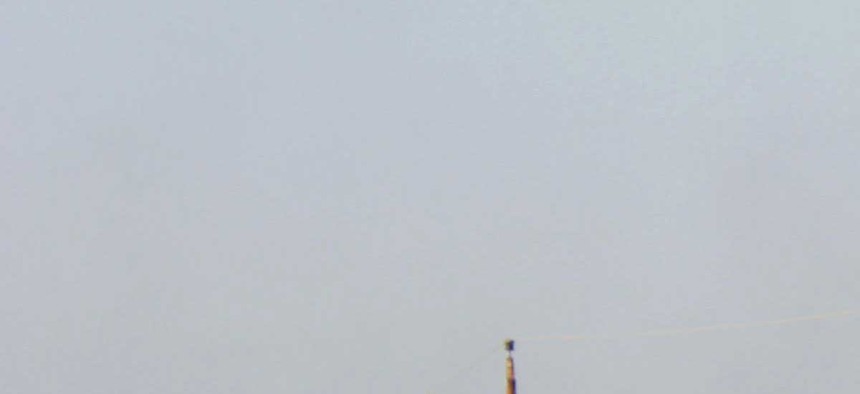
Iraqi security forces and a Shiite militiaman take part in an operation against the Islamic State outside of the northern town of Amerli. AP Photo
US Sends Another 350 Troops to Iraq
The State Department asked for additional U.S. troops to Iraq to beef up security around the U.S. Embassy in Baghdad. By Kaveh Waddell
President Obama announced on Wednesday that he has approved the deployment of 350 additional troops to Iraq, bringing the total number of U.S. military personnel authorized to deploy to Iraq to more than 1,100.
This round of U.S. involvement in Iraq began just three months ago, in mid-June, in response to the Islamic State in Iraq and Syria's march through the country. Early on, Obama sought to calm critics who were afraid that the American presence in Iraq would spin out of control. "I think we always have to guard against mission creep, so let me repeat what I've said in the past," he said in June. "American combat troops are not going to be fighting in Iraq again."
It's now September, and the number of U.S. military personnel authorized for Iraq is almost four times higher than it was when he spoke those words. How did we get here?
In response to a mounting threat from the advance of ISIS fighters, Obama on June 16 authorized sending 275 military personnel to protect the U.S. Embassy in Baghdad. Days later, on June 19, Obama approved the deployment of 300 military advisers to collaborate with and train Iraqi forces, supporting them in their fight against ISIS.
Most of the authorizations were announced in chunks, either by President Obama or Defense Secretary Chuck Hagel. After the initial group of 300 special-ops forces were sent in on June 19, Obama announced on June 30 that he had authorized an additional 300 troops to fly to Iraq and reinforce security at U.S. installations in Baghdad.
July was a quieter month, and no deployments were announced. In August, however, a refugee crisis in Iraq came to a head, and the U.S. stepped in to help. On Aug. 7, President Obama announced a campaign of airstrikes against ISIS and a humanitarian airlift to help thousands of Iraqi Yazidis trapped on a mountain in the northwest part of the country. Just a few days later, on Aug. 12, 130 military advisers flew to Iraq to help work out a plan to evacuate the refugees. Hagel stressed the limited nature of the role of the incoming advisers: "This is not a combat boots on the ground kind of operation," he said.
Hagel's comments are often echoed by senior White House officials and Obama himself, who want to emphasize the humanitarian and advisory roles of the troops in Iraq, as distinct from combat troops. "There is no American military solution to the larger crisis in Iraq," Obama said last month. And the Pentagon on Wednesday denied that the slowly growing American presence in Iraq is getting out of hand. "Mission creep means that the mission itself, the objectives change over time, they expand," a spokesperson said on CNN. "It doesn't refer to intensity of operation. It doesn't refer to the number of troops."
